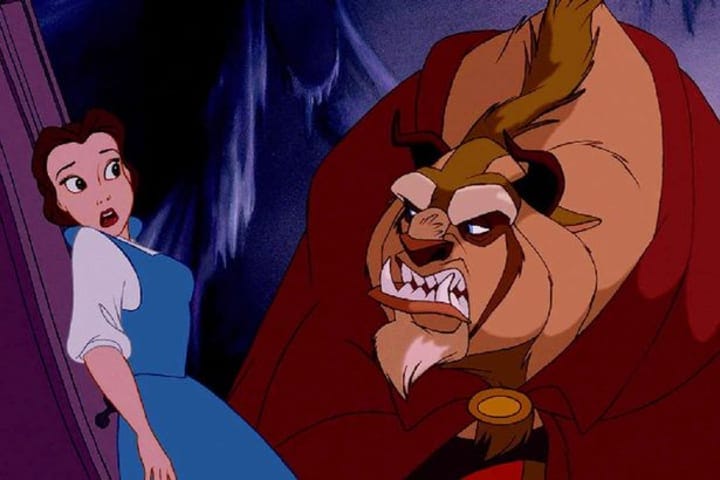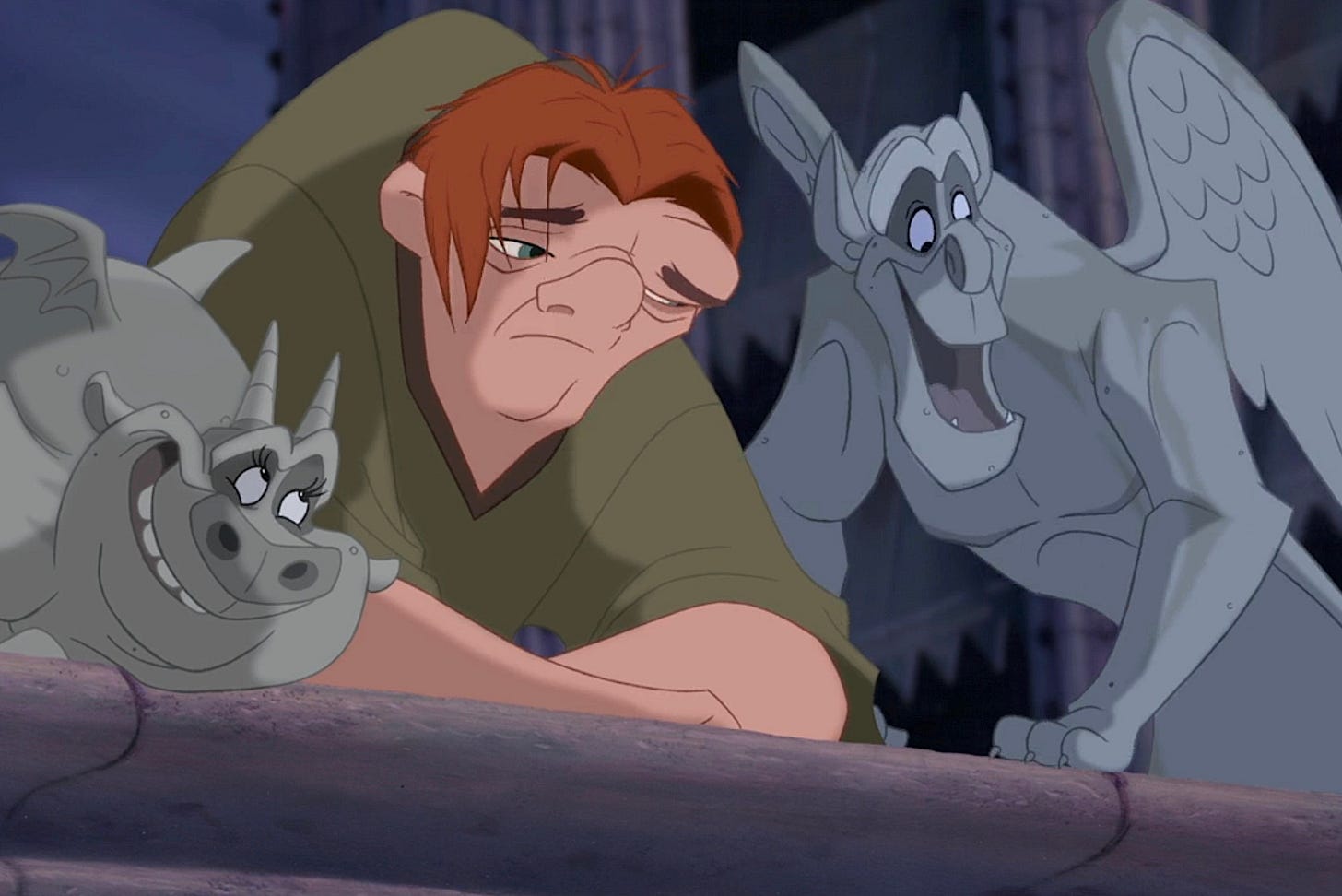What do fairytales teach us about masculinity?
We know that princesses are not great role models for girls, but what about princes and boys?
Hi, I’m the author of “Good Night Stories for Rebel Girls”. This is a series of posts leading to the release of my new book, a collection of original tales reframing masculinity for a new generation of children. The book is titled “Stellar Stories for Boys of the Future.”
It will be out on March 20th, and you can pre-order it on Amazon.
When Good Night Stories for Rebel Girls became a Kickstarter sensation in 2016 and again in 2017, there was one thing that I repeated in interviews over and over again:
Over the past decade, we have learned that these stories have a vital role in transmitting gender stereotypes.
Children’s literature is an incredibly useful tool for analyzing human culture because fairytales contain, in a very condensed form, the values that we believe are crucial for being part of the human community. Fairytales are the welcome kit we offer our kids to give them coordinates about what we expect of them and about what they can expect from life on this planet.
Stories help children give shape to their deepest emotions, inform them about the consequences of good and bad actions, and provide humanity with a moral foundation.
But traditional stories often pass onto new generations messages that are less obvious, yet still incredibly powerful in shaping our society. They often do so through a so-called “hidden curriculum.”
Hidden curriculum refers to the unwritten, unofficial, and often unintended lessons, values, and perspectives that students learn in school. While the “formal” curriculum consists of the courses, lessons, and learning activities students participate in, as well as the knowledge and skills educators intentionally teach to students, the hidden curriculum consists of the unspoken or implicit academic, social, and cultural messages that are communicated to students while they are in school.
It is not just schools or lesson plans that have a hidden curriculum, of course.
In Cinderella, for example, the moral of the story, the one in plain view, is that good wins over evil, even if evil seems to be more powerful. However, the fact that Cinderella is a beautiful blonde girl, and her stepsisters are ugly and have darker skin is part of the hidden curriculum in the story: the notion that beauty and fair skin are associated with purity of heart.
The ability to decode some of these hidden messages is now fairly widespread (yay) and lots of people today can detect at least portions of the hidden curricula in the media we consume.
As a result, our ability to portray girls and women in empowering and freeing ways has hugely improved compared to even just 10 or 15 years ago.
What have we done for boys, though? What is the ‘hidden curriculum’ teaching them about masculinity?
While working on Good Night Stories for Rebel Girls, I spent a long time analyzing female characters in traditional fairytales. If I wanted to rewrite gender norms for girls, I needed to understand the ingredients of the stories I had been told since I was a little girl.
As I approached the creation of Stellar Stories for Boys of the Future, my collection of bedtime stories rewiring our idea of masculinity (coming on March 20th), I went back to… the crime scene, so to speak.
This time, I focused on princes. Were they as free as I had assumed?
The discoveries I made left me aghast.
While Princesses are granted their individuality, princes conform. Here’s the definition that Wikipedia gives for ‘Prince Charming’:
Prince Charming is a fairy tale stock character who comes to the rescue of a damsel in distress and must engage in a quest to liberate her from an evil spell. This classification suits most heroes of a number of traditional folk tales, including "Snow White", "Sleeping Beauty", "Rapunzel" and "Cinderella", even if in the original story they were given another name, or no name at all.
Often handsome and romantic, these characters are essentially interchangeable, serving as a foil to the heroine.
The Prince's most important job is to protect the princess. This isn’t just true for stories that end in marriage but also for a tale like Jack and the Magic Beans: here, Jack partakes in a dangerous mission because his duty is to protect his mother, even if he is just a boy.
Princes also have another function in fairytales: protecting the integrity of the kingdom. Matrimony is the only way to keep the patrimony intact and to ensure the continuity of power.
Princes don’t have an inner life. Take Snow White’s father: the poor guy is a widower. He marries an evil woman who separates him from his only daughter, and what do we know about what he feels? Absolutely nothing. Female characters are sad, jealous, envious, happy, and frustrated… male characters offer boys no representation of the existence of an inner life.
How do the effect of this hidden curriculum manifest in grown men’s lives?
Conformity
The creation of highly hierarchical organizations that have their foundation on the conformity of a group (armies, churches..) is a very distinctive trait of masculinity in our culture. Conformity is seen as a strategy for the group to protect itself and/or others. Many men see in non-conformity an existential trait: standing out, or allowing others to stand out, isn’t safe in this system of values.
Protection
Many men believe that their honor and their reason to exist lies upon their ability to protect women (even against their will). We’ll come back to this in future issues of this newsletter, because protecting somebody who is free is way scarier and more complicated than protecting someone whom I can control.
The conservation of power
We have taught to generations of men that being custodians of their family’s patrimony is the way to honor their ancestors. Hence, family’s expectations weigh often more on men than they do on women. Giving up power isn’t just uncomfortable on an individual level, but it also feels like a betrayal of your life’s mission.
‘Men are just simpler’
We grew up with the idea that guys are simple. ‘Boys are like dogs’ a woman at the park told
, author of Boymom: Raising Boys in the Age of Impossible Masculinity. The notion that boys must be fed and worn out and that’s it is widespread. This myth has deprived generations of men of the tools to navigate their emotional life in a healthy and constructive way. If you feel your manhood is threatened whenever you pay attention to your feelings, you’ll learn to turn your attention away from them. Of course, those feelings don’t disappear, they simply find unhealthy and often destructive ways to come out.
The obscenity of male pain
When male characters in traditional fairytales show their feelings, in particular when they show their pain, they often end up being ostracized: take the Beast in Beauty and the Beast or the Hunchback of Notre Dame, for example. Other humans cannot see their inner turmoil: the Beast lives in isolation far from the village, and his servants have been turned into objects.
Quasimodo (who ends up killing himself in the original novel by Victor Hugo) leads a secret existence in the bell tower of Notre Dame, and his only friends are the Gargoyles.
In other words, countless fairytales portray men who acknowledge and express their feelings as obscene.
The word obscene comes from Latin: it means that something is repulsive and must be kept out of sight.
For every girl who learns that she needs a man to save her, there is a boy who learns that he’s either the savior or he doesn’t have a reason to be alive.
OK, but these stories are OLD…
You may think that these are old stories and that kids these days don’t read Cinderella or The Hunchback of Notre Dame or Beauty and the Beast (not entirely true, see recent reboots) But the stereotypes I told you about are alive and well also in more modern tales.
Even Inside Out, Pixar's brilliant dive into human emotions, couldn’t resist the cliché: Riley’s dad’s control center is basically a frat house of bumbling dudes glued to the game.
We’ve convinced ourselves that boys are simpler than girls, their needs more basic. But this misconception prevents us from truly seeing them. It blinds us to their struggles and keeps us from offering them the support they desperately need to cultivate rich emotional and spiritual lives.
What’s more: most saviours, superheroes and spies live a double life: it’s only the top-performing part of a man that can be shown to others; everything else (the pain, the insecurity, the need to be held…) must be kept hidden, even from the person you love.
Over the past decade, we have woken up to the reality that a vast majority of the stories we consumed together had a very negative impact on girls, robbing them of their self-confidence and their freedom.
It is now time to wake up to the impact that the same stories have not just on boys and men, but on the idea that most of us (even women and girls) hold of masculinity.
Seeing men’s pain is hard because:
our culture trained us to look elsewhere
men still hold the vast majority of the world’s political, economic, and religious power, and that doesn’t make compassion come easily
The data is clear, though: boys and men are not all right.
In the US, men account for 80% of persons arrested for violent crimes; the suicide rate among men is over 3.85 times higher than that of women. Men are far more likely than women to go missing, sleep rough, become dependent on alcohol, and use drugs frequently.
In Italy and France, male violence costs us a whopping 5% of the GDP yearly.
If we truly care for the well-being of our boys, we must do for boys what we did (and must continue to do) for girls. We must offer them stories and characters that celebrate wholesomeness. We must tell them that they are worthy of love not because of what they can do, but because of who they are.
And we must resist the temptation of turning away from male pain, as hard as it is. You know what they say: the best way out is through.
Only if we see gender equality as a journey of mutual liberation will we be able to uproot the patriarchal system once and for all.










I loved reading this and it makes me want to order your book (though my kids are mostly grown now). I love your mention of “Inside Out,” too — and was reminded of something that my friend’s husband remarked, after watching the first movie: the emotional control center of Riley’s mom was managed by Sadness, for her dad, the emotion at the center was Anger.
Now I want to start psychoanalyzing Buzz and Woody.
So glad you’re taking this on